|
(11) | EP 0 220 065 B1 |
| (12) | EUROPEAN PATENT SPECIFICATION |
|
|
| (54) |
Trichothecene conjugates Trichotecenkonjugate Conjugués de trichotécène |
|
|
|||||||||||||||||||||||||||||||
| Note: Within nine months from the publication of the mention of the grant of the European patent, any person may give notice to the European Patent Office of opposition to the European patent granted. Notice of opposition shall be filed in a written reasoned statement. It shall not be deemed to have been filed until the opposition fee has been paid. (Art. 99(1) European Patent Convention). |
Technical Field
[0001] The present invention relates generally to the conjugation of molecules to agents that bind to a defined population of cells and more specifically, to conjugates of agents such as antibodies with trichothecenes and to methods for using these conjugates.
Background Art
[0002] The use of antibodies as carriers for toxic agents to kill tumor cells selectively has depended upon the coordination of research in three distinct areas: (a) the development of polyclonal or monoclonal antibodies (and their fragments) with specificity for a defined population of cells, such as tumor cells; (b) the elucidation of the chemistry of toxic molecules and the conditions appropriate for their linkage to antibodies; and (c) the production and isolation of naturally occurring toxic molecules. Conjugates of monoclonal antibodies with drugs, plant toxins, and ribosomal inactivating proteins have been summarized by Morgan and Foon, (Monoclonal Antibody Therapy or Cancer: Preclinical Models and Investigations; Basic and Clinical Tumor Immunology, Vol. 2, Kluwer Academic Publishers, Hingham, MA) and Uhr (Journal of Immunology 133:i-vii, 1984). Interest in the potent higher plant toxin molecules peaked with the development of monoclonal antibodies because it appeared that the latter could be used as highly specific targeting agents for these toxins.
[0003] In general, the higher molecular weight toxins have characteristic A and B chains, with the B chain responsible for binding (usually via lectins to oligosaccharides) and A chains that act catalytically to irreversibly inhibit elongation factor 2 (EF2), therefore preventing protein synthesis. The vision was that the specificity of the antibody could substitute for the non-specific binding of 1 chain and deliver A chain selectively to tumor cells. More recently, a class of compounds called "ribosomal inactivating proteins" (RIPs) have been discovered that represent the equivalent of A chains without any associated B chain.
[0004] A number of obstacles emerged, however, that compromised the realization of this simple vision. First, it was apparent that it was critical to develop systems to remove B chain from A chain beyond purity achieved with simple affinity chromatography. The RIPs and cloned toxins represent one practical solution to this problem. Second, the reticuloendothelial system removes macromolecules from the circulation, especially those that have been altered, such as an antibody that has been bound to toxin. Third, it became apparent that there were receptors for the carbohydrates that exist naturally on the protein plant toxins. These also contributed to non-specific uptake and, therefore, toxicity. Finally, it became clear that B chain was critical for more than just binding to the cell, and seemed to facilitate the translocation of the A chain into the cell and eventually into the cytoplasm, where it effected its cytotoxicity.
[0005] Due to these obstacles, there is a need in the art for a class of conjugates that overcome the problems noted above, while concurrently possessing the capability of killing defined populations of cells, such as tumor cells, on a selective basis. It is an aim of the present invention to fulfill this need and further provide other related advantages.
Disclosure of Invention
[0006] Briefly stated, the present invention discloses conjugates of trichothecenes and agents that bind to a defined population of cells. Preferred are conjugates of trichothecene molecules with polyclonal or monoclonal antibodies or fragments thereof that recognize antigens that are present only on tumor cells or are augmented in their expression on tumor cells as compared to normal tissues.
[0007] The agent may, for example, comprise monoclonal antibodies, especially monoclonal antibodies of human or other warm blooded animal origin.
[0008] In accordance with the present invention, "trichothecenes" are defined to include molecules derived from fungi imperfecti, baccharus megapotamica or prepared synthetically or synthesized from fungal products that have as their common characteristic a sesquiterpenoid central ring structure, and simple and macrocyclic trichothecene derivatives.
[0009] The trichothecene molecules are coupled to the agent through non-covalent and covalent linkages, preferably a covalent linkage, such as a peptide bond, a disulfide bond, a thioester bond, or a thioether bond. This covalent linkage may be formed between: (a) the trichothecene itself; (b) a trichothecene hemisuccinate carboxylic acid; (c) a trichothecene hemisuccinate N-hydroxy succinimidate ester; or (d) trichothecene complexes with poly-L-lysine or any polymeric carrier; and one or more amino, sulfhydryl or carboxyl groups of the agent.
[0010] There is disclosed a method for inhibiting the growth and metabolism of antigen positive cells, comprising exposing the antigen positive cells to a conjugate of a trichothecene and an agent that binds to the antigen positive cells.
[0011] There is disclosed a method for rendering relatively insoluble trichothecene conjugates soluble,, by glycosylation.
[0012] Other aspects of the invention will become relevant upon reference to the following detailed description.
Best Mode for Carrying Out the Invention
[0013] "Trichothecenes" are a species of mycotoxins produced by soil fungi of the class fungi imperfecti or isolated from baccharus megapotamica (Bamburg, J.R. Proc. Molec. Subcell Bio. 8:41-110, 1983; Jarvis & Mazzola, Acc. Chem. Res. 15:338-395, 1982). They appear to be the most toxic molecules that contain only carbon, hydrogen and oxygen (Tamm, C. Fortschr. Chem. Org. Naturst. 31:61-117, 1974). They all act at the level of the ribosome as inhibitors of protein synthesis, either at the initiation, elongation or termination phases. In the formulation of the present invention it was found that as small molecules (ca. 4-600 m.w.), they have potential advantages:
1) improved delivery due to only minor changes in the molecular weight of antibody;
2) lack of receptor mediated, non-specific uptake, e.g. via carbohydrate receptors, a drawback of higher molecular weight (ca. 30,000 m.w.) plant toxins, like ricin A chain, or ribosomal inactivating proteins such as gelonin.
Similar to toxins, however, mycotoxins can be extremely potent. They are the most potent small molecule inhibitors of protein synthesis in eucaryotic cells. Unconjugated to antibody, verrucarin A (Table 4) is 10-fold or greater more potent than actinomycin D, the most potent per weight of the chemotherapeutic drugs currently approved for clinical use. Since most currently used drugs act at the level of DNA, these ribosomal inactivating drugs, like toxins, should not be adversely affected by resistance to "standard" drugs, and should produce additive cytotoxicity to existing therapies.[0014] There are two broad classes of trichothecenes: those that have only a central sesquiterpenoid structure and those that have an additional macrocyclic ring (simple and macrocyclic trichothecenes, respectively). The simple trichothecenes may be subdivided into three groups. Group A simple trichothecenes may be characterized by the formula:
wherein
R₁ is H, OH, or
R₂ is H, OH, or
R₃ is H, OH, or
R₄ is H or OH; and R₅ is H, OH,
Representative Group A simple trichothecenes and corresponding functional groups are listed in Table 1.
Group B simple trichothecenes may be characterized by the formula:
wherein
R₁ is H, OH, or
R₂ is H, OH, or
R₃ is H, OH, or
and R₄ is H, OH, or
[0015] Representative Group B simple trichothecenes and corresponding functional groups are listed in Table 2.
TABLE 2
| Group B Simple Trichothecenes | ||||
| Trichothecenes | R₁ | R₂ | R₃ | R₄ |
| Trichothecolone | H | OH | H | H |
| Trichothecin | H | OCOCH= CHCH₃ | H | H |
| Deoxynivalenol (DON) | OH | H | OH | OH |
| 3-Acetyldeoxynivalenol | OAc | H | OH | OH |
| 5-Acetyldeoxynivalenol | OH | H | OH | OAc |
| 3, 15-Diacetyldeoxynivalenol | OAc | H | OAc | OH |
| Nivalenol | OH | OH | OH | OH |
| 4-Acetylnivalenol (fusarenon-X) | OH | OAc | OH | OH |
| 4,15-Diacetylnivalenol | OH | OAc | OAc | OH |
| 4,7,15-Triacetylnivalenol | OH | OAc | OAc | OAc |
| Tetracetylnivalenol | OAc | OAc | OAc | OAc |
[0017] Representativo Group C simple trichotheoenes and corresponding R' functional groups are listed in Table 3.
TABLE 3
| Group C Simple Trichothecenes | |
| Trichothecenes | R' |
| Crotocol | OH |
| Crotocin | OCOCH=CHCH₃ |
[0018] The macrocyclic trichothecenes may be characterized by the formula:
wherein R₁ is OH or
R₂ is H, OH,
or OCOCH₂CH(CH₃)₂; and
R' is:
The macrocyclic trichothecenes may also be characterized by the formula:
wherein
R₁ is: H, OH, or
R₂ is: H, OH,
or OCOCH₂CH(CH₃)₂;
and R' is:
In addition to the general structure shown above, many "baccharins" have been isolated from the higher plant Baccharis megapotamica, and are described in the literature, for instance as disclosed by Jarvin et al. (Chemistry of Alleopathy, ACS Symposium Series No. 268; Ed. A.C. Thompson, 1984, pp.149-159).
[0019] The sesquiterpenoid ring functions in a manner similar to the A chains of plant toxins, in binding to ribosomes and inhibiting protein synthesis. The macrocyclic ring enhances cell binding and internalization in an unknown manner. There are molecules in each class that, while potent inhibitors of translation in cell-free systems, are only minimally cytotoxic (ID₅₀ 10 ug/ml) to eucaryotic cells.
[0020] Variations in ribosome binding ability are not well correlated with cytotoxicity, strongly suggesting that differential delivery to ribosomes in the cell or introcellular deactivation may play an important role in the activities of these drugs against eucaryotic cells. (Bamburg, J. R., Biological and Biochemical Actions of Trichothecene Mycotoxins, Prog. Mol. Subcell. Biol. 8:41-110, 1983; McLaughlin, C. S., Vaughan, M. H., Cambell, I. M., Wei, C. M., Stafford, M. E., and Hansen, B. S., Inhibition of Protein Synthesis by Trichothecenes, In: Mycotoxins in Human and Animal Health, Pathotox Publishers, Park Forest South, IL, pp. 263-273, 1977; and Doyle, T. W., and Bradner, W. T., Trichothecenes, In: Antioancer Agents Based on Natural Product Models [Cassidy and Bouros, Eds.] Academic Press, Inc., New York, NY, pp. 43-72, 1980.) It is possible, for example, that verrucarol binds poorly to cell membranes, or may be deactivated intracellularly, deficiencies that may be overcome by conjugation to monoclonal antibodies. There have been some studies of the rates at which certain of the trichothecenes are converted into biologically inactive molecules (apotrichothecenes) by intracellular acid catalysis as might occur in lyzosomes. The macrocyclic trichothecenes and some simple trichothecenes such as anguidine and T-2 toxin are inactivated quite slowly, whereas less cytotoxic molecules, such as verrucarol, are inactivated more quickly. There is an inverse linear correlation between cytotoxicity and the rate of this rearrangement into apotrichothecenes.
[0021] Anguidine, a simple trichothecene, has been tested in Phase I (Murphy, W. K., Burgess, M. A., Valdivieso, M., Livingston, R. B., Bodey, G. P., and Freireich, E. J., Phase 1 Evaluation of Anguidine, Cancer Treat. Repts. 62:1497, 1978) and Phase II (Adler, S. S., Lowenbraun, S., Birch, B., Jarrell, R., and Garrerd, J., Anguidine: A Broad Phase II Study of the Southeastern Cancer Study Group, Cancer Treat. Repts. 68:423, 1984) clinical trials in patients. The overall tumor response rate was low and there was considerable hematologic toxicity in the Phase II trial. In the Phase I trial, toxicity included nausea, vomiting, hypotension, central nervous system symptoms, diarrhea, chills end fever, generalized burning erythema, stomatitis, shortness of breath, moderate myelosuppression with an association between life threatening toxicity and the presence of liver metastases or impairment of liver function recognized at higher doses.
[0022] The linkage of trichothecene molecules to polyclonal and monoclonal antibodies or fragments thereof that recognize antigens that are augmented in their expression on tumor cells as compared to normal tissues may be divided into two distinct strategies: (1) linking poorly-oytotoxic trichothecenes to antibodies or fragments thereof in order to render them cytotoxic; and (2) conjugating cytotoxic trichothecenes to antibodies or fragments thereof to deliver them selectively to tumor cells, sparing normal tissues most of their toxicity.
[0023] Within the present invention, monoclonal antibodies were prepared by immunizing rodents or other animals and/or are developed by harvesting human lymphocytes from patients bearing malignancies and immortalizing the antibody secretion of the cells by standard hybridoma technology (Geffer et al., Somatic Cell Genet. 3:231, 1977). Alternatively, polyclonal antiserum is prepared by harvesting serum from animals following immunization with tumor cells or other defined tumor-associated antigens or harvesting from humans who have or have had exposure to tumors or tumor-associated antigens, and subjecting the serum to standard purification techniques. Antibodies were screened for specificity using standard radioimmunoassay or enzyme- linked immunosorbent assay (ELISA) against the appropriate targets. Screening was performed with normal human tissues to select antibody with appropriate tumor specificity.
[0024] After purification of the desired antibody species, the antibodies were conjugated to the trichothecene molecules. The carboxylic acid of the trichothecene hemisuccinate was linked to the amino groups of the antibody using a carbodiimide. Alternatively, N-hydroxy succimidate ester of the trichothecene hemisuccinate is prepared and used to link to the amino groups of the antibody. Both of these methods result in an amide bond between the trichothecene and the antibody. Trichothecenes that possess a free hydroxyl group may be directly linked to an antibody molecule using reaction with a carbodiimide. Thioether can also be used as a stable bond between the antibody and the trichothecene. In addition, the trichothecene molecules arc linked to poly-L-lysine (m.w. 300 to 150,000). The poly-L-lysine/trichothecene complex is then linked to the antibody via an amide bond. Also, when a more labile bond seems desirable, the trichothecene is linked by a disulfide or a thioester bond to the monoclonal antibody (MA).
[0025] The immunoconjugates were easily separated from the unreacted trichothecene by FPLC gel filtration using a TSK 3000 column. Alternatively, the unreacted trichothecene is removed by dialysis.
[0026] The molecular weight of the conjugate will not be significantly greater than that of the free antibody. Therefore, separation of the immunoconjugate from free antibody requires use of hydroxylapatite or hydrophobic column chromatography.
[0027] Conjugates were analyzed by isoelectric focusing (IEF) and SDS-PAGE. IEF is a measure of the degree of substitution and resulting charge of the antibody. SDS-PAGE separates proteins on the basis of molecular weight and is used to assess the covalent aggregates formed during the conjugation process. The conjugate is compared to the unconjugated antibody for immune reactivity that is quantified by flow cytometry. The immunoconjugates are incubated with antigen positive cells, washed, and then the cells are incubated with fluorescein isothiocyanate-linked goat anti-mouse antibody. Cell bound fluorescence is read on a flow cytometer and mean fluorescence index is calculated. Competition is performed using a standard unconjugated antibody preparation in comparison for inhibition with the conjugate. Similar analyses, employing antigen negative cells, were used to demonstrate the retention of specificity of the conjugate for antigen positive cells.
[0028] Gytotoxicity of the immunoconjugates was assessed with two methods. A colorimetric assay employs 3-(4,5-dimethylthiazol-2-yl)-2,5-diphenyl tetrozolium bromide as the substrate. This substance is cleaved by living cells to yield a dark blue formazan product. This process requires active mitochondria. The substrate (MTT) was solubilized and read on an ELISA reader. This assay has an excellent correlation with the standard ³H-thymidine incorporation assay and avoids the use of radioactivity. ³H-thymidine was reserved for confirmation of major results.
[0029] Potency and selectivity assays were performed by incubating conjugates with antigen positive and antigen negative cell lines. Conjugates were added to the cells at varying concentrations and cell survival assessed after continuous and short exposure times. The conjugates were incubated with the cells for three days for continuous exposure and for two hours for the short exposure. At the end of three days cell survival was assessed.
[0030] The conjugates were also tested for their ability to inhibit peptidyl transferase. The assay is based upon competition with radiolabeled trichodermin for the binding site on the 60S ribosome. Conjugates were also tested for their ability to inhibit protein synthesis using natural mRNA to determine their overall effect on protein synthesis and a poly U to measure the effect on elongation.
Example I
Verrucarol
[0032] Verrucarol is a simple, poorly cytotoxic trichothocene. It is conjugated to anti-melanoma antibody 9.2.27 using a carbodiimide. The primary or secondary hydroxyl group react with the carbodiimide to form an active form of the molecule. This molecule then reacts with lysines on the antibody to form the conjugate. Titration of the conjugate against antigen positive and antigen negative melanoma cells indicated an ID₅₀ of 10⁻⁸ M. This is compared to the drug verrucarol alone that has an ID₅₀ of 10⁻⁵ M or greater.
Example II
Verrucarin A
[0033] Verrucarin A or its hemisuccinate is conjugated to monoclonal antibody 9.2.27 by the same method as stated in Example 1. Increasing titers of the conjugate are incubated with the antigen positive and antigen negative melanoma cells and then tested for potency and selectivity as described herein. The ID₅₀ against the antigen positive cells was 10⁻⁷ M or better where there was no toxicity against the antigen negative cells. Verrucarin A itself yielded an ID₅₀ of 2.5 x 10⁻¹¹M.
Example III
Conjugation via cis-Aconityl Linkages
[0034] Verrucarol is covalently linked to cis-aconitic anhydride using standard procedures, such as that described above for the preparation of hemisuccinate. Alternatively, the N-hydroxysuccinimidate ester of verrucarol may be reacted with a diamine. The derivatized ester may then be covalently linked to cis-aconitic anhydride through the free amino group. The cis-aconityl moieties of either derivative may then be covalently linked to antibody using carbodiimide, as described in Example I.
Example IV
Glycosylation of Anguidine
[0035] Anguidine, a simple trichothecene, is poorly soluble, but glycosylation of anguidine improves solubility. Anguidine is glycosylated according to the method of W.R. Roush et al., J. Am. Chem. Soc. 107:3354-3355 (1985). Glycosylated anguidine may then be conjugated to antibody using carbodiimide, as described in Example I, or via hemisuccinate derivatives of anguidine, according to Example II.
Example V
Reduction of Intoxification
[0036] Verrucarin A-antibody conjugates are administered intravenously to a warm-blooded animal, in order to inhibit antigen positive cells. Metabolic processes of the recipient animal may cause the premature release of the trichothecene portion of the conjugate, resulting in toxicity to cells that are not antigen positive.
[0037] The intoxification that may result from the release of unconjugated trichothecene may be reduced by administration of anti-trichothecene antibody. Briefly, either at a predetermined time after injection of a verrucarin A-antibody conjugate, or upon detection of toxicity symptoms in a recipient, antibody capable of binding to and blocking the toxicity of verrucarin A is injected into the recipient.
[0038] Alternatively, either at a predetermined time after injection of conjugate or upon symptoms of toxicity, an intoxified recipient's plasma may be passed through an affinity column containing immobilized anti-verrucarin A antibody. The affinity column binds verrucarin A, thereby reducing the level of free verrucarin A in the plasma. The plasma is then infused back into the recipient.
Example VI
Reduction of Gastrointestinal Levels of Verrucarin A
[0039] Injection of verrucarin A-antibody conjugates into a recipient may result in the release of free verrucarin A into the gut of the recipient. The toxicity of the released verrucarin A may be decreased through a reduction of gastrointestinal levels of the free trichothecene (as described, for example, in Buck and Bratich, Vet. Med. 81:73-77, 1986). This may be accomplished by orally administering activated charcoal to an intoxified recipient. Activated charcoal binds free verrucarin A, thus preventing absorption from the gastrointestinal tract. The recipient is then given an oral cathartic, which facilitates the movement of the activated charcoal-trichothecene complexes through the gut.
Claims for the following Contracting State(s): BE, CH, DE, FR, GB, IT LI, LU, NL,
SE
1. A conjugate of a trichothecene and an agent that binds to a defined population of
cells.
2. The conjugate of Claim 1 wherein said trichothecene has a central sesquiterpenoid
structure.
3. The conjugate of Claim 2 wherein said trichothecene has an additional macrocyclic
ring.
4. The conjugate of Claim 3 wherein said trichothecene is selected from the group consisting
of verrucarin A, verrucarin B, verrucarin J, 2'-dehydroverrucarin A, roridin A, roridin
D, roridin E, roridin H, satratoxin F, satratoxin G, satratoxin H, vertisporin, baccharins,
myrotoxin A, myrotoxin B, myrotoxin C, myrotoxin D, mytoxin A, mytoxin B, mytoxin
C, roritoxin A, roritoxin B, roritoxin C and roritoxin D.
5. The conjugate of Claim 4 wherein the trichothecene is verrucarin A.
6. The conjugate of Claim 1 or 2 wherein said trichothecene is selected from the group
consisting of trichodermol, verrucarol, trichodermin, anguidine, and T-2 toxin.
7. The conjugate of Claim 6 wherein the trichothecene is verrucarol.
8. The conjugate of any one of the preceding claims wherein said conjugate may be rendered
soluble by glycosylation.
9. The conjugate of Claim 1 wherein said trichothecene comprises the formula:

wherein:
R₁ is H, OH, or R₁ is H, OH, or

R₂ is H, OH,

R₃ is H, OH, or

R₄ is H, OH, =O,

wherein:
R₁ is H, OH, or R₁ is H, OH, or
R₂ is H, OH,
R₃ is H, OH, or
R₄ is H, OH, =O,
10. The conjugate of claim 9 wherein R₄ comprises an epoxide group.
11. The conjugate of claim 1 wherein said trichothecene comprises the formula:

wherein:
R₁ is OH, or
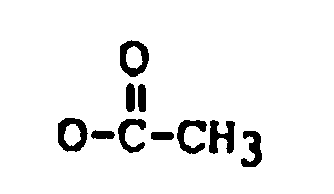
R₂ is H, OH,

and
R' is:
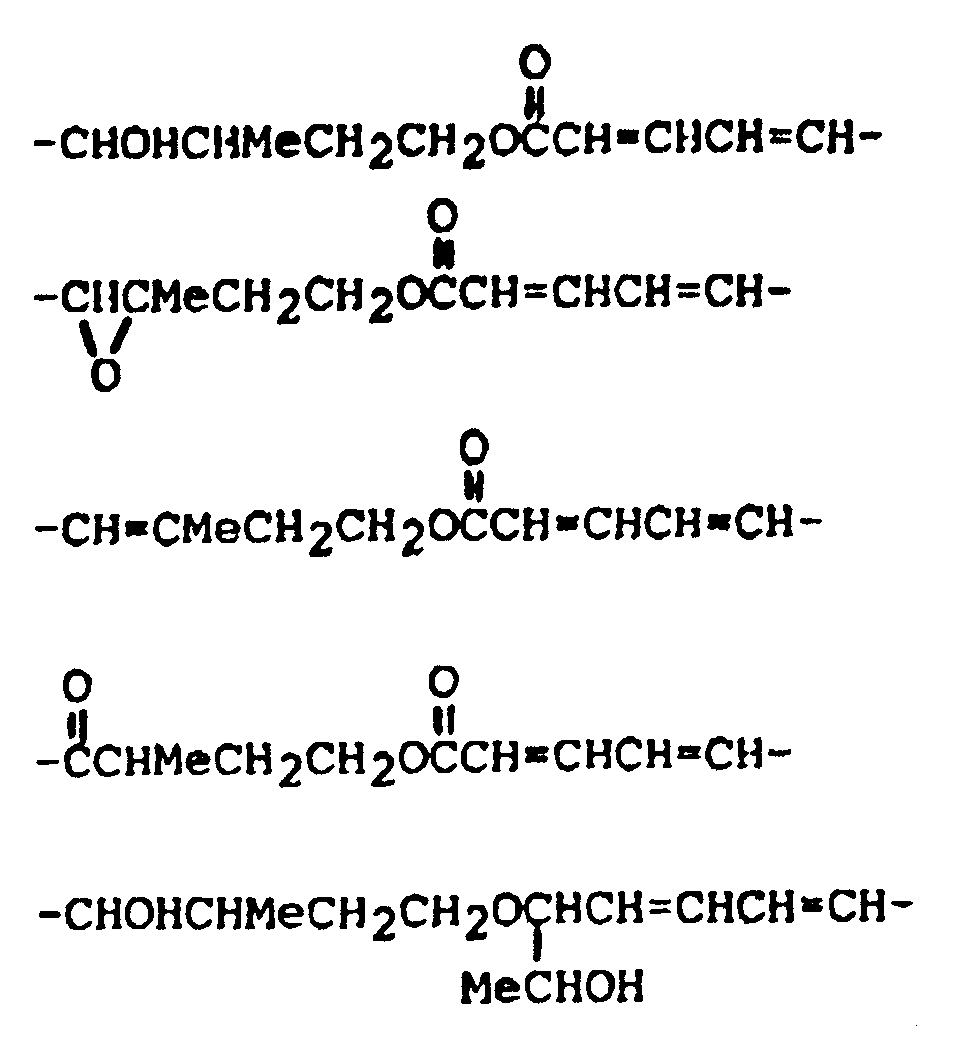
wherein:
R₁ is OH, or
R₂ is H, OH,
and
R' is:
12. The conjugate of any one of the preceding claims wherein said agent comprises monoclonal
antibodies.
13. The conjugate of Claim 12 wherein the monoclonal antibodies are of human or other
warm blooded animal origin.
14. The conjugate of any one of Claims 1 to 11 wherein said agent comprises polyclonal
antibodies.
15. The conjugate of any one of the preceding claims wherein said defined population of
cells comprises tumor cells.
16. The conjugate of any one of the preceding claims wherein said defined population of
cells comprises cells bearing tumor-associated antigens.
17. The conjugate of any one of the preceding claims wherein said trichothecene and said
agent are coupled through a covalent linkage.
18. The conjugate of claim 17 wherein the covalent linkage is formed between a trichothecene
hemisuccinate carboxylic acid and one or more amino groups of the agent.
19. The conjugate of claim 17 wherein said covalent linkage is formed between a trichothecene
hemisuccinate N-hydroxy succinimidate ester and one or more amino groups of the agent.
20. The conjugate of claim 17 wherein said covalent linkage is formed between trichothecene/poly-L-lysine
complexes and one or more amino groups of the agent.
21. The conjugate of claim 17 wherein said covalent linkage is a diaulfide bond, thioester
bond, or thioether bond.
22. The conjugate of claim 1 wherein said trichothecene comprises the formula:

wherein:
R₁ is H, OH, or

R₂ is H, OH,

or OCOCH₂CH(CH₃)₂;
and
R' is:
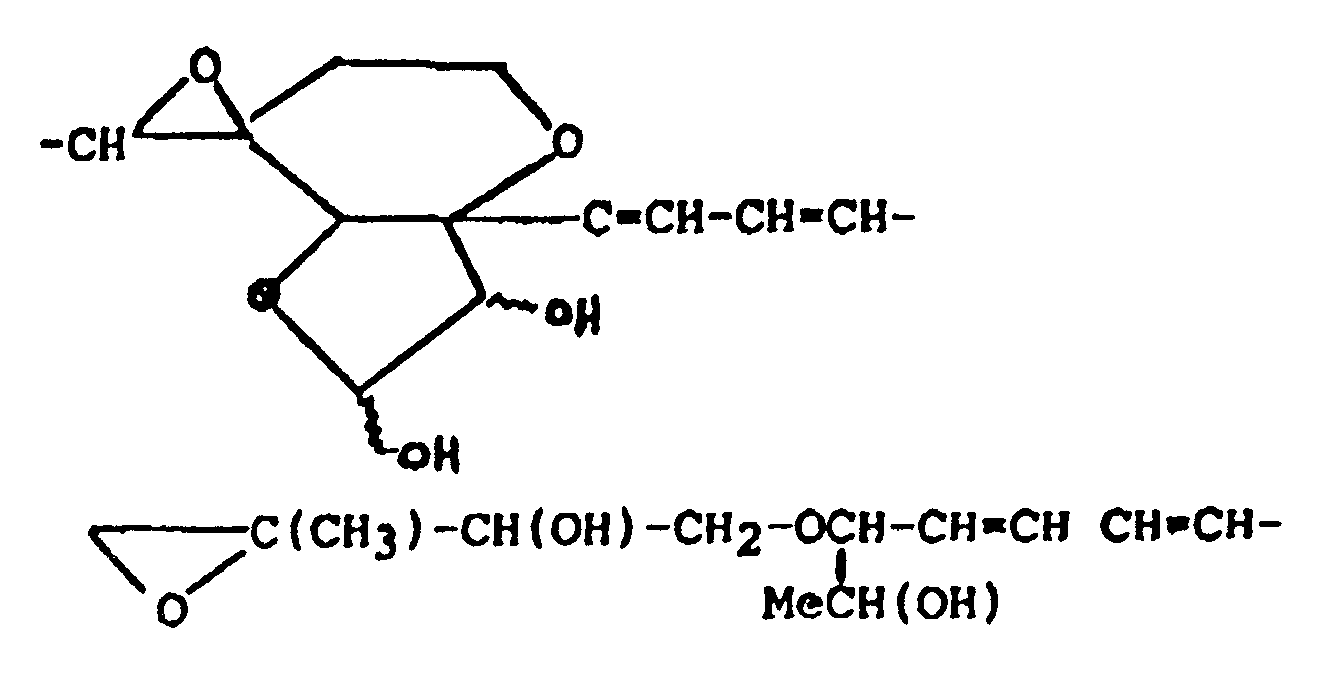
wherein:
R₁ is H, OH, or
R₂ is H, OH,
or OCOCH₂CH(CH₃)₂;
and
R' is:
23. A conjugate according to any one of Claims 1 to 22 for use in the treatment of tumours.
24. A conjugate of a trichothecene and an agent that binds to a defined population of
cells for use as a cytotoxic agent targeted at the defined population of cells.
25. A composition comprising a conjugate according to any one of Claims 1 to 22, 28 and
29.
26. Use of a composition according to Claim 30 for the manufacture of a medicament for
killing the defined population of cells.
Claims for the following Contracting State(s): AT, ES, GR
1. A method of preparing a conjugate of a trichothecene and an agent that binds to a
defined population of cells, which method comprises conjugating a trichothecene with
an agent that binds to a defined population of cells.
2. The method of Claim 1 wherein said trichothecene has a central sesquiterpenoid structure.
3. The method of Claim 2 wherein said trichothecene has an additional macrocyclic ring.
4. The method of Claim 3 wherein said trichothecene is selected from the group consisting
of verrucarin A, verrucarin B, verrucarin J, 2'-dehydroverrucarin A, roridin A, roridin
D, roridin E, roridin H, satratoxin F, satratoxin G, satratoxin H, vertisporin, baccharins,
myrotoxin A, myrotoxin B, myrotoxin C, myrotoxin D, mytoxin A, mytoxin B, mytoxin
C, roritoxin A, roritoxin B, roritoxin C and roritoxin D.
5. The method of Claim 4 wherein the trichothecene is verrucarin A.
6. The method of Claim 1 or 2 wherein said trichothecene is selected from the group consisting
of trichodermol, verrucarol, trichodermin, anguidine, and T-2 toxin.
7. The method of Claim 6 wherein the trichothecene is verrucarol.
8. The method of any one of the preceding Claims wherein said conjugate may be rendered
soluble by glycosylation.
9. The method of Claim 1 wherein said trichothecene comprises the formula:
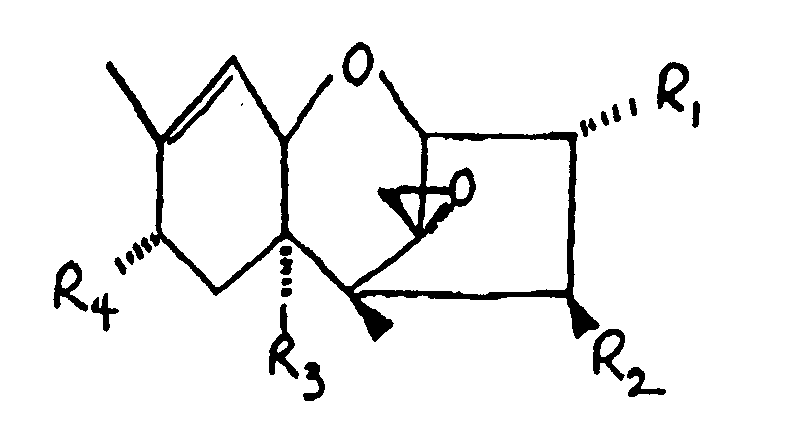
wherein:
R₁ is H, OH, or
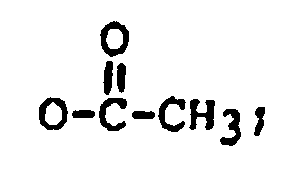
R₂ is H, OH,

R₃ is H, OH, or
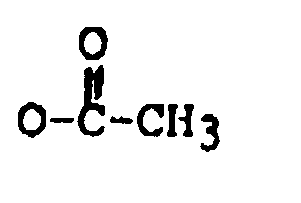
R₄ is H, OH, =O,

wherein:
R₁ is H, OH, or
R₂ is H, OH,
R₃ is H, OH, or
R₄ is H, OH, =O,
10. The method of claim 9 wherein R₄ comprises an epoxide group.
11. The method of claim 1 wherein said trichothecene comprises the formula:

wherein:
R₁ is OH, or
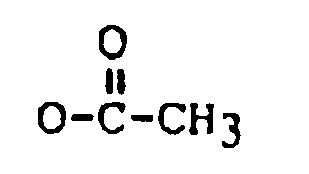
R₂ is H, OH,

and
R' is:
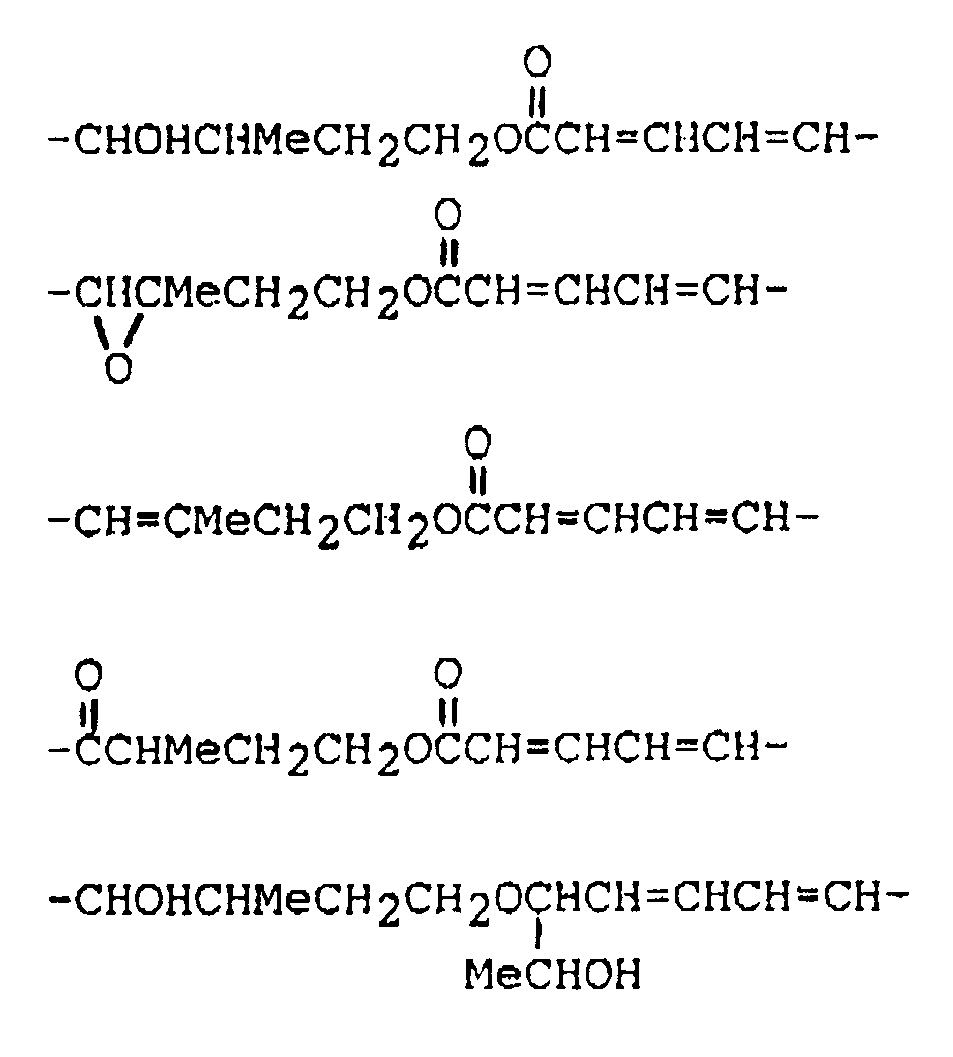
wherein:
R₁ is OH, or
R₂ is H, OH,
and
R' is:
12. The method of any one of the preceding claims wherein said agent comprises monoclonal
antibodies.
13. The method of Claim 12 wherein the monoclonal antibodies are of human or other warm
blooded animal origin.
14. The method of any one of Claims 1 to 11 wherein said agent comprises polyclonal antibodies.
15. The method of any one of the preceding claims wherein said defined population of cells
comprises tumor cells.
16. The method of any one of the preceding claims wherein said defined population of cells
comprises cells bearing tumor-associated antigens.
17. The method of any one of the preceding claims wherein said trichothecene and said
agent are coupled through a covalent linkage.
18. The method of claim 17 wherein the covalent linkage is formed between a trichothecene
hemisuccinate carboxylic acid and one or more amino groups of the agent.
19. The method of claim 17 wherein said covalent linkage is formed between a trichothecene
hemisuccinate N-hydroxy succinimidate ester and one or more amino groups of the agent.
20. The method of claim 17 wherein said covalent linkage is formed between trichothecene/poly-L-lysine
complexes and one or more amino groups of the agent.
21. The method of claim 17 wherein said covalent linkage is a disulfide bond, thioester
bond, or thioether bond.
22. The method of claim 1 wherein said trichothecene comprises the formula:

wherein:
R₁ is H, OH, or
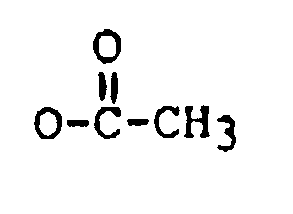
R₂ is H, OH,

and R' is:
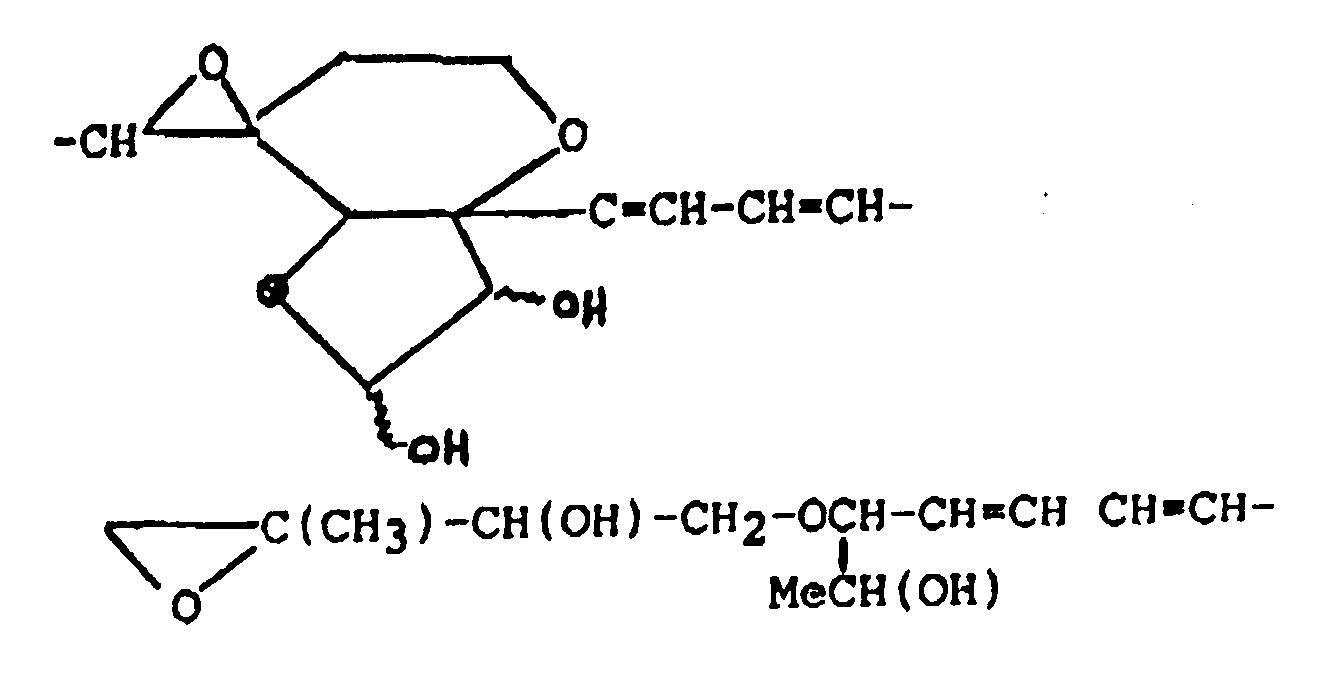
wherein:
R₁ is H, OH, or
R₂ is H, OH,
and R' is:
23. A method according to any one of Claims 1 to 22 wherein the conjugate is for use in
the treatment of tumors.
24. A method according to any one of Claims 1 to 22 wherein the conjugate is for use as
a cytotoxic agent targeted at the defined population of cells.
25. A method of preparing a composition, which method comprises preparing a composition
comprising a conjudate according to any one of Claims 1 to 22.
26. A method according to Claim 25 wherein the composition is for the manufacture of a
medicament for killing the defined population of cells.
Patentansprüche für folgende(n) Vertragsstaat(en): BE, CH, DE, FR, GB, IT, LI, LU,
NL, SE
1. Konjugat aus einem Trichothecen und einem Agens, das sich an eine definierte Population
von Zellen bindet.
2. Konjugat nach Anspruch 1, dadurch gekennzeichnet, daß besagtes Trichothecen eine zentrale
Sesquiterpen-Struktur besitzt.
3. Konjugat nach Anspruch 2, dadurch gekennzeichnet, daß besagtes Trichothecen einen
zusätzlichen makrozyklischen Ring besitzt.
4. Konjugat nach Anspruch 3, dadurch gekennzeichnet, daß besagtes Trichothecen ausgewählt
ist aus der Gruppe, die aus Verrucarin A, Verrucarin B, Verrucarin J, 2'-Dehydroverrucarin
A, Roridin A, Roridin D, Roridin E, Roridin H, Satratoxin F, Satratoxin G, Satratoxin
H, Vertisporin, Baccharinen, Myrotoxin A, Myrotoxin B, Myrotoxin C, Myrotoxin D, Mytoxin
A, Mytoxin B, Mytoxin C, Roritoxin A, Roritoxin B, Roritoxin C und Roritoxin D besteht.
5. Konjugat nach Anspruch 4, dadurch gekennzeichnet, daß das Trichothecen Verrucarin
A ist.
6. Konjugat nach Anspruch 1 oder 2, dadurch gekennzeichnet, daß das Trichothecen ausgewählt
ist aus der Gruppe, die aus Trichodermol, Verrucarol, Trichodermin, Anguidin und T-2
Toxin besteht.
7. Konjugat nach Anspruch 6, dadurch gekennzeichnet, daß das Trichothecen Verrucarol
ist.
8. Konjugat nach einem der vorangehenden Ansprüche, dadurch gekennzeichnet, daß besagtes
Konjugat durch Glykosylierung löslich gemacht werden kann.
9. Konjugat nach Anspruch 1, dadurch gekennzeichnet, daß besagtes Trichothecen die Formel
umfaßt:

in der:
R₁ H, OH oder

ist;
R₂ H, OH

ist;
R₃ H, OH oder

ist;
R₄ H, OH, =O,

ist.
in der:
R₁ H, OH oder
ist;
R₂ H, OH
ist;
R₃ H, OH oder
ist;
R₄ H, OH, =O,
ist.
10. Konjugat nach Anspruch 9, dadurch gekennzeichnet, daß R₄ eine Epoxidgruppe umfaßt.
11. Konjugat nach Anspruch 1, dadurch gekennzeichnet, daß besagtes Trichothecen die Formel
umfaßt:
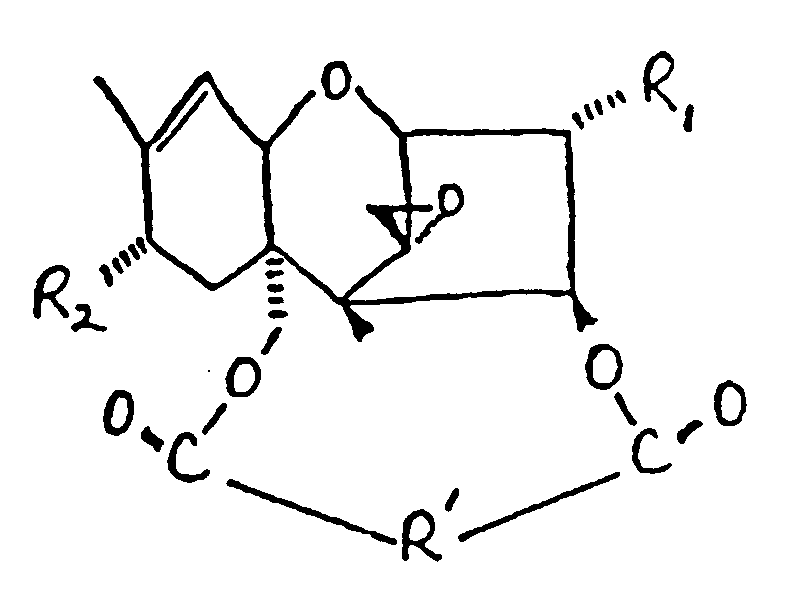
in der:
R₁ OH oder
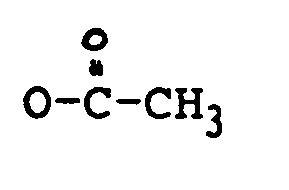
ist;
R₂ H, OH,

oder OCOCH₂CH(CH₃)₂ ist;
und
R'
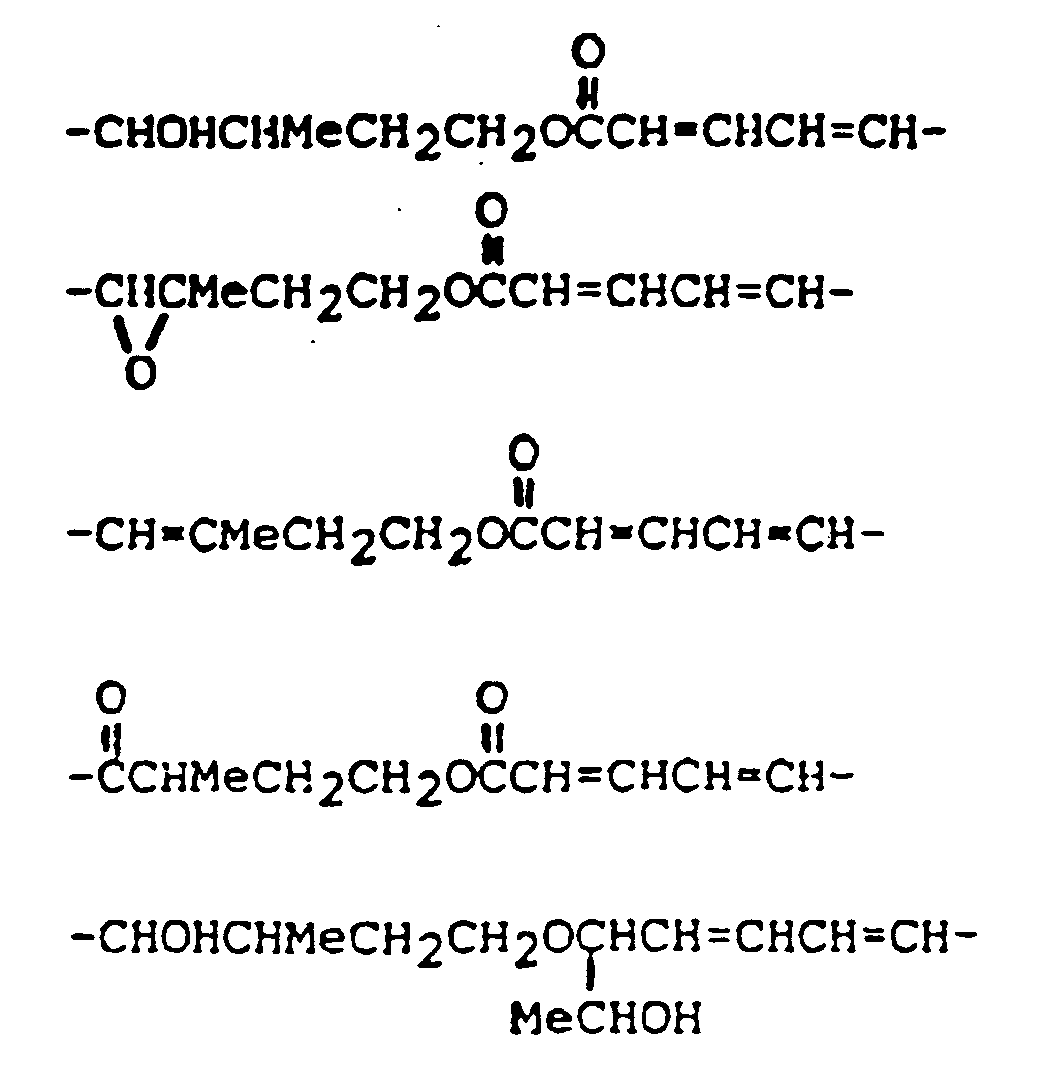
ist.
in der:
R₁ OH oder
ist;
R₂ H, OH,
oder OCOCH₂CH(CH₃)₂ ist;
und
R'
ist.
12. Konjugat nach einem der vorangehenden Ansprüche, dadurch gekennzeichnet, daß besagtes
Agens monoklonale Antikörperumfaßt.
13. Konjugat nach Anspruch 12, dadurch gekennzeichnet, daß die monoklonalen Antikörper
humanen oder anderen Warmblüterursprung haben.
14. Konjugat nach einem der Ansprüche 1 bis 11, dadurch gekennzeichnet, daß besagtes Agens
polyklonale Antikörper umfaßt.
15. Konjugat nach einem der vorangehenden Ansprüche, dadurch gekennzeichnet, daß besagte
definierte Population von Zellen Tumorzellen umfaßt.
16. Konjugat nach einem der vorangehenden Ansprüche, dadurch gekennzeichnet, daß besagte
Population von Zellen Zellen umfaßt, die tumorassoziierte Antigene tragen.
17. Konjugat nach einem der vorangehenden Ansprüche, dadurch gekennzeichnet, daß besagtes
Trichothecen und besagtes Agens durch eine kovalente Verknüpfung gekoppelt sind.
18. Konjugat nach Anspruch 17, dadurch gekennzeichnet, daß die kovalente Verknüpfung zwischen
einer Trichothecenhemisuccinatcarbonsäure und einer oder mehreren Aminogruppen des
Agens ausgebildet ist.
19. Konjugat nach Anspruch 17, dadurch gekennzeichnet, daß besagte kovalente Verknüpfung
zwischen einem Trichothecenhemisuccinat-N-hydroxysuccinimidatester und einer oder
mehreren Aminogruppen des Agens ausgebildet ist.
20. Konjugat nach Anspruch 17, dadurch gekennzeichnet, daß besagte kovalente Verknüpfung
zwischen Trichothecen/Poly-L-Lysin-Komplexen und einer oder mehreren Aminogruppen
des Agens ausgebildet ist.
21. Konjugat nach Anspruch 17, dadurch gekennzeichnet, daß besagte kovalente Verknüpfung
eine Disulfidbindung, Thioesterbindung oder eine Thioetherbindung ist.
22. Konjugat nach Anspruch 1, dadurch gekennzeichnet, daß besagtes Trichothecen die Formel
umfaßt:

in der:
R₁ H, OH oder

ist;
R₂ H, OH,
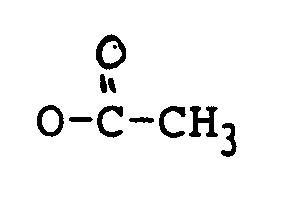
oder OCOCH₂CH(CH₃)₂ ist;
und
R'

ist.
in der:
R₁ H, OH oder
ist;
R₂ H, OH,
oder OCOCH₂CH(CH₃)₂ ist;
und
R'
ist.
23. Konjugat nach einem der Ansprüche 1 bis 22 zur Verwendung bei der Behandlung von Tumoren.
24. Konjugat aus einem Trichothecen und einem Agens, das sich an eine definierte Population
von Zellen bindet, zur Verwendung als ein zytotoxisches Agens, das auf eine definierte
Population von Zellen gerichtet ist.
25. Zusammensetzung, die ein Konjugat nach einem der Ansprüche 1 bis 22, 23 und 24 umfaßt.
26. Verwendung einer Zusammensetzung nach Anspruch 25 zur Herstellung eines Medikaments
zum Abtöten der definierten Population von Zellen.
Patentansprüche für folgende(n) Vertragsstaat(en): AT, ES, GR
1. Verfahren zur Herstellung eines Konjugats aus einem Trichothecen und einem Agens,
das sich an eine definierte Population von Zellen bindet, wobei dieses Verfahren umfaßt,
daß ein Trichothecen mit einem Agens konjugiert wird, das sich an eine definierte
Population von Zellen bindet.
2. Verfahren nach Anspruch 1, dadurch gekennzeichnet, daß besagtes Trichothecen eine
zentrale Sesquiterpen-Struktur besitzt.
3. Verfahren nach Anspruch 2, dadurch gekennzeichnet, daß besagtes Trichothecen einen
zusätzlichen makrozyklischen Ring besitzt.
4. Verfahren nach Anspruch 3, dadurch gekennzeichnet, daß besagtes Trichothecen ausgewählt
ist aus der Gruppe, die aus Verrucarin A, Verrucarin B, Verrucarin J, 2'-Dehydroverrucarin
A, Roridin A, Roridin D, Roridin E, Roridin H, Satratoxin F, Satratoxin G, Satratoxin
H, Vertisporin, Baccharinen, Myrotoxin A, Myrotoxin B, Myrotoxin C, Myrotoxin D, Mytoxin
A, Mytoxin B, Mytoxin C, Roritoxin A, Roritoxin B, Roritoxin C und Roritoxin D besteht.
5. Verfahren nach Anspruch 4, dadurch gekennzeichnet, daß das Trichothecen Verrucarin
A ist.
6. Verfahren nach Anspruch 1 oder 2, dadurch gekennzeichnet, daß das Trichothecen ausgewählt
ist aus der Gruppe, die aus Trichodermol, Verrucarol, Trichodermin, Anguidin und T-2
Toxin besteht.
7. Verfahren nach Anspruch 6, dadurch gekennzeichnet, daß das Trichothecen Verrucarol
ist.
8. Verfahren nach einem der vorangehenden Ansprüche, dadurch gekennzeichnet, daß besagtes
Konjugat durch Glykosylierung löslich gemacht werden kann.
9. Verfahren nach Anspruch 1, dadurch gekennzeichnet, daß besagtes Trichothecen die Formel
umfaßt:

in der:
R₁ H, OH oder
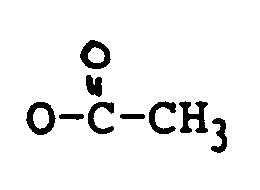
ist;
R₂ H, OH,
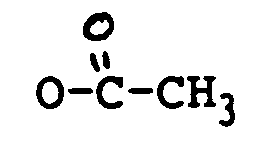
oder COCH=CHCH₃ ist;
R₃ H, OH oder
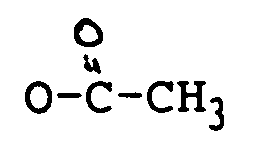
ist;
R₄ H, OH, =O,

ist.
in der:
R₁ H, OH oder
ist;
R₂ H, OH,
oder COCH=CHCH₃ ist;
R₃ H, OH oder
ist;
R₄ H, OH, =O,
ist.
10. Verfahren nach Anspruch 9, dadurch gekennzeichnet, das R₄ eine Epoxidgruppe umfaßt.
11. Verfahren nach Anspruch 1, dadurch gekennzeichnet, daß besagts Trichothecen die Formel
umfaßt:

in der:
R₁ OH oder
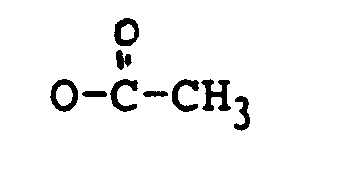
ist;
R₂ H, OH,

oder OCOCH₂CH(CH₃)₂ ist;
und
R'
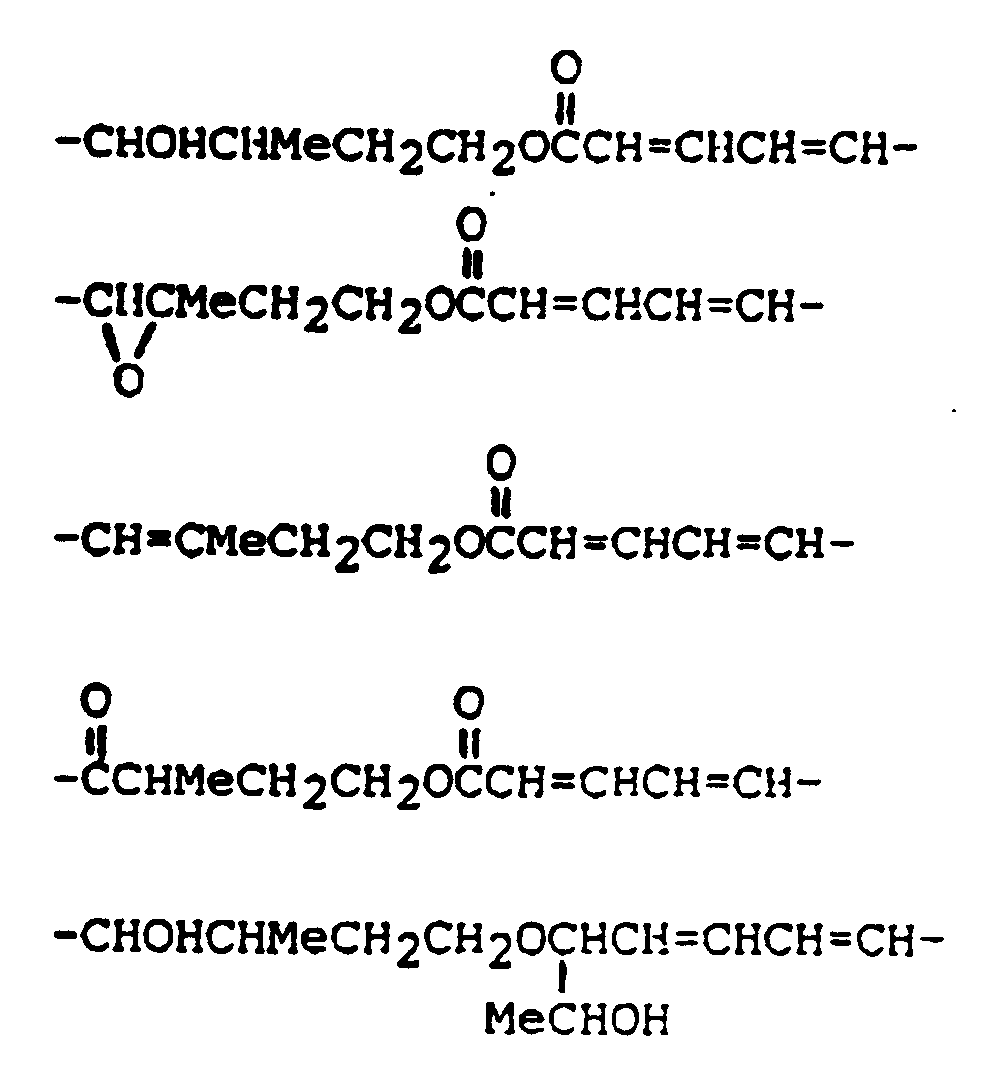
ist.
in der:
R₁ OH oder
ist;
R₂ H, OH,
oder OCOCH₂CH(CH₃)₂ ist;
und
R'
ist.
12. Verfahren nach einem der vorangehenden Ansprüche, dadurch gekennzeichnet, daß besagtes
Agens monoklonale Antikörper umfaßt.
13. Verfahren nach Anspruch 12, dadurch gekennzeichnet, daß die monoklonalen Antikörper
humanen oder anderen Warmblüterursprung haben.
14. Verfahren nach einem der Ansprüche 1 bis 11, dadurch gekennzeichnet, daß besagtes
Agens polyklonale Antikörper umfaßt.
15. Verfahren nach einem der vorangehenden Ansprüche, dadurch gekennzeichnet, daß besagte
definierte Population von Zellen Tumorzellen umfaßt.
16. Verfahren nach einem der vorangehenden Ansprüche, dadurch gekennzeichnet, daß besagte
Population von Zellen Zellen umfaßt, die tumorassoziierte Antigene tragen.
17. Verfahren nach einem der vorangehenden Ansprüche, dadurch gekennzeichnet, daß besagtes
Trichothecen und besagtes Agens durch eine kovalente Verknüpfung gekoppelt sind.
18. Verfahren nach Anspruch 17, dadurch gekennzeichnet, daß die kovalente Verknüpfung
zwischen einer Trichothecenhemisuccinatcarbonsäure und einer oder mehreren Aminogruppen
des Agens ausgebildet ist.
19. Verfahren nach Anspruch 17, dadurch gekennzeichnet, daß besagte kovalente Verknüpfung
zwischen einem Trichothecenhemisuccinat-N-hydroxysuccinimidatester und einer oder
mehreren Aminogruppen des Agens ausgebildet ist.
20. Verfahren nach Anspruch 17, dadurch gekennzeichnet, daß besagte kovalente Verknüpfung
zwischen Trichothecen/Poly-L-Lysin-Komplexen und einer oder mehreren Aminogruppen
des Agens ausgebildet ist.
21. Verfahren nach Anspruch 17, dadurch gekennzeichnet, daß besagte kovalente Verknüpfung
eine Disulfidbindung, Thioesterbindung oder eine Thioetherbindung ist.
22. Verfahren nach Anspruch 1, dadurch gekennzeichnet, daß besagtes Trichothecen die Formel
umfaßt:

in der:
R₁ H, OH, oder
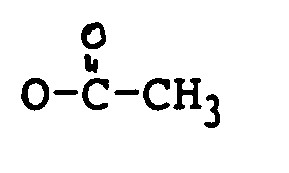
ist;
R₂ H, OH,
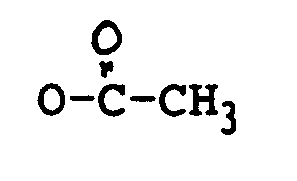
oder OCOCH₂CH(CH₃)₂ ist;
R'
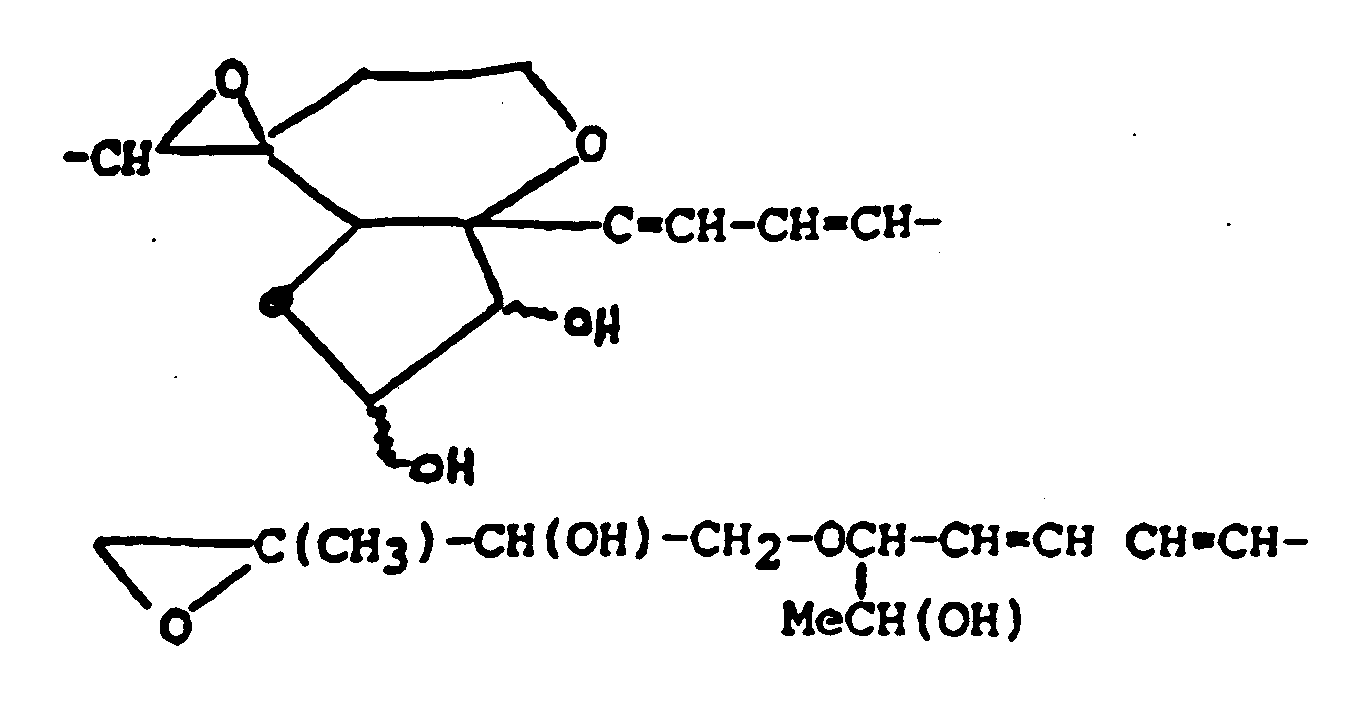
ist.
in der:
R₁ H, OH, oder
ist;
R₂ H, OH,
oder OCOCH₂CH(CH₃)₂ ist;
R'
ist.
23. Verfahren nach einem der Ansprüche 1 bis 22, dadurch gekennzeichnet, daß das Konjugat
zur Behandlung von Tumoren verwendet wird.
24. Verfahren nach einem der Ansprüche 1 bis 22, dadurch gekennzeichnet, daß das Konjugat
als ein zytotoxisches Agens verwendet wird, das auf die definierte Population von
Zellen gerichtet ist.
25. Verfahren zur Herstellung einer Zusammensetzung, wobei dieses Verfahren umfaßt, daß
eine Zusammensetzung hergestellt wird, die ein Konjugat umfaßt, nach einem der Ansprüche
1 bis 22.
26. Verfahren nach Anspruch 25, dadurch gekennzeichnet, daß die Zusammensetzung zur Herstellung
eines Medikaments zum Abtöten der definierten Population von Zellen verwendet wird.
Revendications pour l'(les) Etat(s) contractant(s) suivant(s): BE, CH, DE, FR, GB,
IT, LI, LU, NL, SE
1. Conjugué d'un trichothécène et d'un agent qui se lie à une population définie de cellules.
2. Conjugué suivant la revendication 1, dans lequel le trichothécène possède une structure
centrale de sesquiterpénoïde.
3. Conjugué suivant la revendication 2, dans lequel le trichothécène possède un noyau
macrocyclique supplémentaire.
4. Conjugué suivant la revendication 3, dans lequel le trichothécène est choisi dans
le groupe comprenant la verrucarine A, la verrucarine B, la verrucarine J, la 2'-déhydroverrucarine
A, la roridine A, la roridine D, la roridine E, la roridine H, la satratoxine F, la
satratoxine G, la satratoxine H, la vertisporine, des baccharines, la myrotoxine A,
la myrotoxine B, la myrotoxine C, la myrotoxine D, la mytoxine A, la mytoxine B, la
mytoxine C, la roritoxine A, la roritoxine B, la roritoxine C et la roritoxine D.
5. Conjugué suivant la revendication 4, dans lequel le trichothécène est la verrucarine
A.
6. Conjugué suivant la revendication 1 ou 2, dans lequel le trichothécène est choisi
dans le groupe comprenant le trichodermol, le verrucarol, la trichodermine, l'anguidine
et la toxine T-2.
7. Conjugué suivant la revendication 6, dans lequel le trichothécène est le verrucarol.
8. Conjugué suivant l'une quelconque des revendications précédentes, qui peut être rendu
soluble par glycosylation.
9. Conjugué suivant la revendication 1, dans lequel le trichothécène comprend la formule
:

dans laquelle :
R₁ représente H, un groupe OH

R₂ représente H, un groupe OH,


R₃ représente H, un groupe OH ou
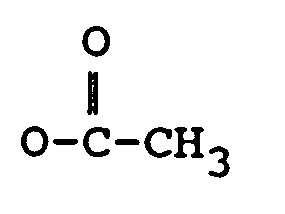
R₄ représente H, un groupe OH, =O,
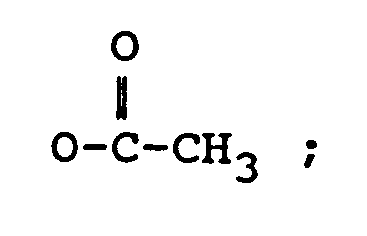

dans laquelle :
R₁ représente H, un groupe OH
R₂ représente H, un groupe OH,
R₃ représente H, un groupe OH ou
R₄ représente H, un groupe OH, =O,
10. Conjugué suivant la revendication 9, dans lequel R₄ comprend un groupe époxyde.
11. Conjugué suivant la revendication 1, dans lequel le trichothécène comprend la formule
:
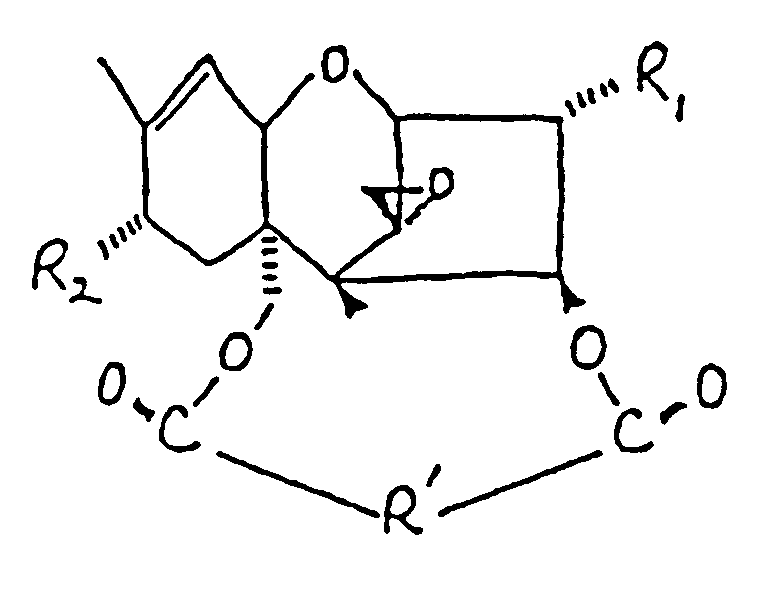
dans laquelle :
R₁ représente un groupe OH ou
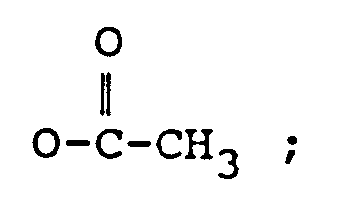
R₂ représente H, un groupe OH,

ou OCOCH₂CH(CH₃)x₂ ;
et R' représente un groupe :

dans laquelle :
R₁ représente un groupe OH ou
R₂ représente H, un groupe OH,
ou OCOCH₂CH(CH₃)x₂ ;
et R' représente un groupe :
12. Conjugué suivant l'une quelconque des revendications précédentes, dans lequel l'agent
comprend des anticorps monoclonaux.
13. Conjugué suivant la revendication 12, dans lequel les anticorps monoclonaux sont d'origine
humaine ou bien proviennent d'un autre animal à sang chaud.
14. Conjugué suivant l'une quelconque des revendications 1 à 11, dans lequel l'agent comprend
des anticorps polyclonaux.
15. Conjugué suivant l'une quelconque des revendications précédentes, dans lequel la population
définie de cellules comprend des cellules tumorales.
16. Conjugué suivant l'une quelconque des revendications précédentes, dans lequel la population
définie de cellules comprend des cellules portant des antigènes associés à des tumeurs.
17. Conjugué suivant l'une quelconque des revendications précédentes, dans lequel le trichothécène
et l'agent sont couplés par une liaison covalente.
18. Conjugué suivant la revendication 17, dans lequel la liaison covalente est formée
entre un acide carboxylique d'hémisuccinate de trichothécène et un ou plusieurs groupes
amino de l'agent.
19. Conjugué suivant la revendication 17, dans lequel la liaison covalente est formée
entre un ester N-hydroxysuccinimidique d'hémisuccinate de trichothécène et un ou plusieurs
groupes amino de l'agent.
20. Conjugué suivant la revendication 17, dans lequel la liaison covalente est formée
entre des complexes trichothécène/poly-L-lysine et un ou plusieurs groupes amino de
l'agent.
21. Conjugué suivant la revendication 17, dans lequel la liaison covalente est une liaison
disulfure, une liaison thioester ou une liaison thioéther.
22. Conjugué suivant la revendication 1, dans lequel le trichothécène comprend la formule
:
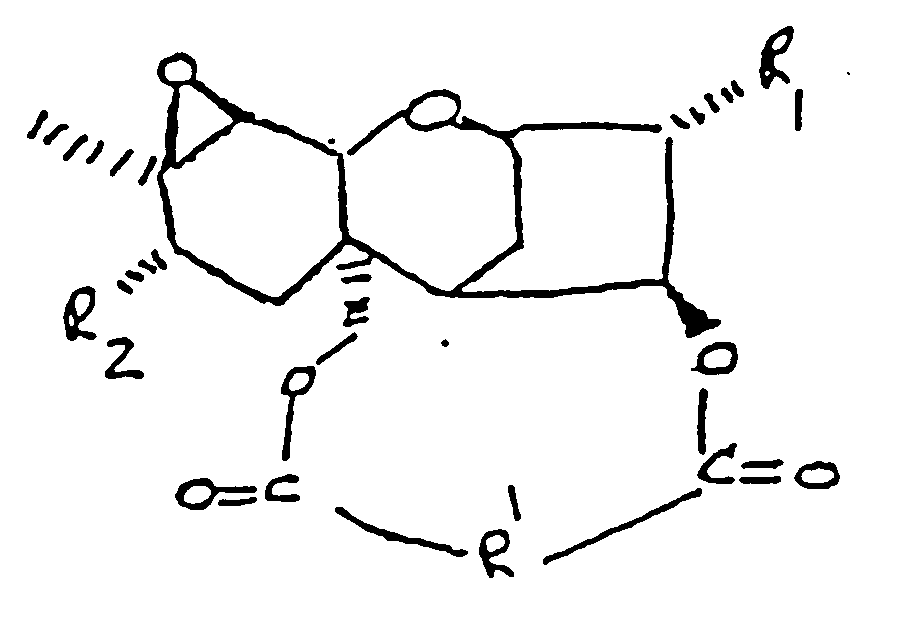
dans laquelle :
R₁ représente H, un groupe OH ou

R₂ représente H, un groupe OH,
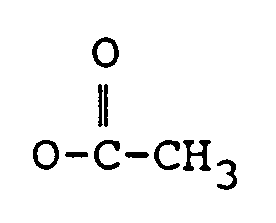
ou OCOCH₂CH(CH₃)₂ ;
et R' représente un groupe :

dans laquelle :
R₁ représente H, un groupe OH ou
R₂ représente H, un groupe OH,
ou OCOCH₂CH(CH₃)₂ ;
et R' représente un groupe :
23. Conjugué suivant l'une quelconque des revendications 1 à 22, destiné à être utilisé
dans le traitement de tumeurs.
24. Conjugué d'un trichothécène et d'un agent qui se lie à une population définie de cellules
pour une utilisation comme agent cytotoxique dirigé vers une cible consistant en la
population définie de cellules.
25. Composition comprenant un conjugué suivant l'une quelconque des revendications 1 à
22, 23 et 24.
26. Utilisation d'une composition suivant la revendication 25 pour la production d'un
médicament destiné à tuer la population définie de cellules.
Revendications pour l'(les) Etat(s) contractant(s) suivant(s): AT, ES, GR
1. Procédé de préparation d'un conjugué d'un trichothécène et d'un agent qui se lie à
une population définie de cellules, procédé qui comprend la conjugaison d'un trichothécène
avec un agent qui se lie à une population définie de cellules.
2. Procédé suivant la revendication 1, dans lequel le trichothécène possède une structure
centrale de sesquiterpénoïde.
3. Procédé suivant la revendication 2, dans lequel le trichothécène possède un noyau
macrocyclique supplémentaire.
4. Procédé suivant la revendication 3, dans lequel le trichothécène est choisi dans le
groupe comprenant la verrucarine A, la verrucarine B, la verrucarine J, la 2'-déhydroverrucarine
A, la roridine A, la roridine D, la roridine E, la roridine H, la satratoxine F, la
satratoxine G, la satratoxine H, la vertisporine, des baccharines, la myrotoxine A,
la myrotoxine B, la myrotoxine C, la myrotoxine D, la mytoxine A, la mytoxine B, la
mytoxine C, la roritoxine A, la roritoxine B, la roritoxine C et la roritoxine D.
5. Procédé suivant la revendication 4, dans lequel le trichothécène est la verrucarine
A.
6. Procédé suivant la revendication 1 ou 2, dans lequcl le trichothécène est choisi dans
le groupe comprenant le trichodermol, le verrucarol, la trichodermine, l'anguidine
et la toxine T-2.
7. Procédé suivant la revendication 6, dans lequel le trichothécène est le verrucarol.
8. Procédé suivant l'une quelconque dos revendications précédentes, dans lequel le conjugué
peut être rendu soluble par glycosylation.
9. Procédé suivant la revendication 1, dans lequel le trichothécène comprend la formule
:
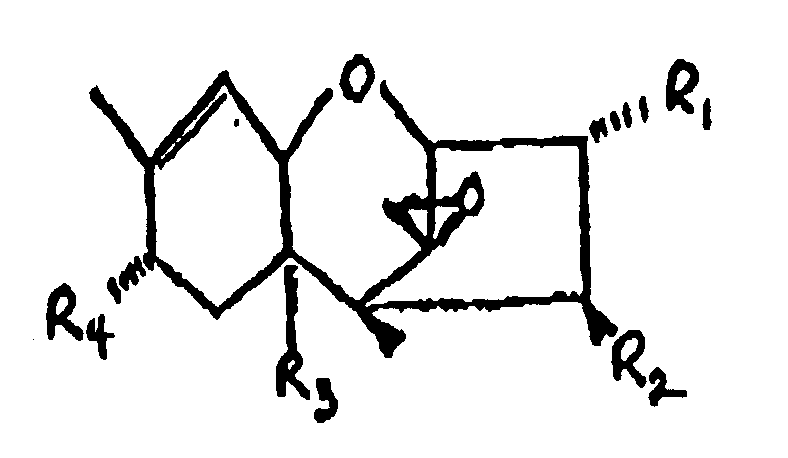
dans laquelle :
R₁ représente H, un groupe OH ou

R₂ représente H, un groupe OH,

R₃ représente H, un groupe OH ou
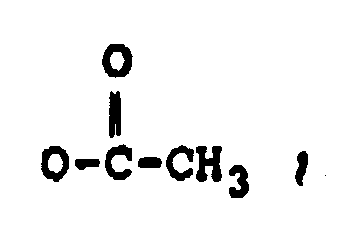
R₄ représente H, un groupe OH, =O,

dans laquelle :
R₁ représente H, un groupe OH ou
R₂ représente H, un groupe OH,
R₃ représente H, un groupe OH ou
R₄ représente H, un groupe OH, =O,
10. Procédé suivant la revendication 9, dans lequel R₄ comprend un groupe époxyde.
11. Procédé suivant la revendication 1, dans lequel le trichothécène comprend la formule
:
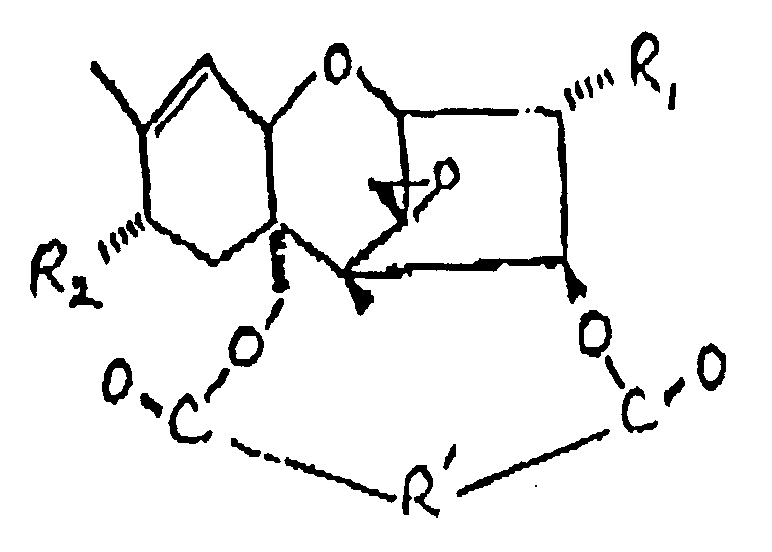
dans laquelle :
R₁ représente un groupe OH ou
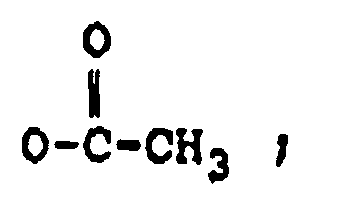
R₂ représente H, un groupe OH,
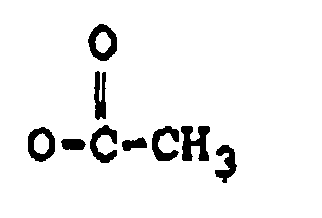
ou OCOCH₂CH(CH₃)₂ ;
et R' représente un groupe :

dans laquelle :
R₁ représente un groupe OH ou
R₂ représente H, un groupe OH,
ou OCOCH₂CH(CH₃)₂ ;
et R' représente un groupe :
12. Procédé suivant l'une quelconque des revendications précédentes, dans lequel l'agent
comprend des anticorps monoclonaux.
13. Procédé suivant la revendication 12, dans lequel les anticorps monoclonaux sont d'origine
humaine ou bien proviennent d'un autre animal à sang chaud.
14. Procédé suivant l'une quelconque des revendications 1 à 11, dans lequel l'agent comprend
des anticorps polyclonaux.
15. Procédé suivant l'une quelconque des revendications précédentes, dans lequel la population
définie de cellules comprend des cellules tumorales.
16. Procédé suivant l'une quelconque des revendications précédentes, dans lequel la population
définie de cellules comprend des cellules portant des antigènes associés à des tumeurs.
17. Procédé suivant l'une quelconque des revendications précédentes, dans lequel le trichothécène
et l'agent sont couplés par une liaison covalente.
18. Procédé suivant la revendication 17, dans lequel la liaison covalente est formée entre
un acide carboxylique d'hémisuccinate de trichothécène et un ou plusieurs groupes
amino de l'agent.
19. Procédé suivant la revendication 17, dans lequel la liaison covalente est formée entre
un ester N-hydroxysuccinimidique d'hémisuccinate de trichothécène et un ou plusieurs
groupes amino de l'agent.
20. Procédé suivant la revendication 17, dans lequel la liaison covalente est formée entre
des complexes trichothécène/poly-L-lysine et un ou plusieurs groupes amino de l'agent.
21. Procédé suivant la revendication 17, dans lequel la liaison covalente est une liaison
disulfure, une liaison thioester ou une liaison thioéther.
22. Procédé suivant la revendication 1, dans lequel le trichothécène comprend la formule
:

dans laquelle :
R₁ représente H, un groupe OH ou
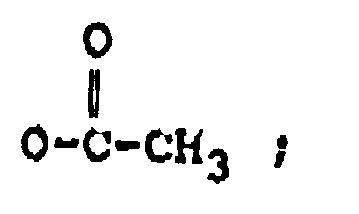
R₂ représente H, un groupe OH,
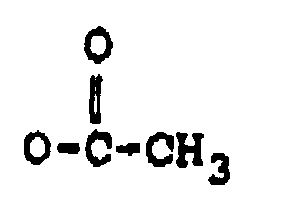
ou OCOCH₂CH(CH₃)₂ ;
et R' représente un groupe :
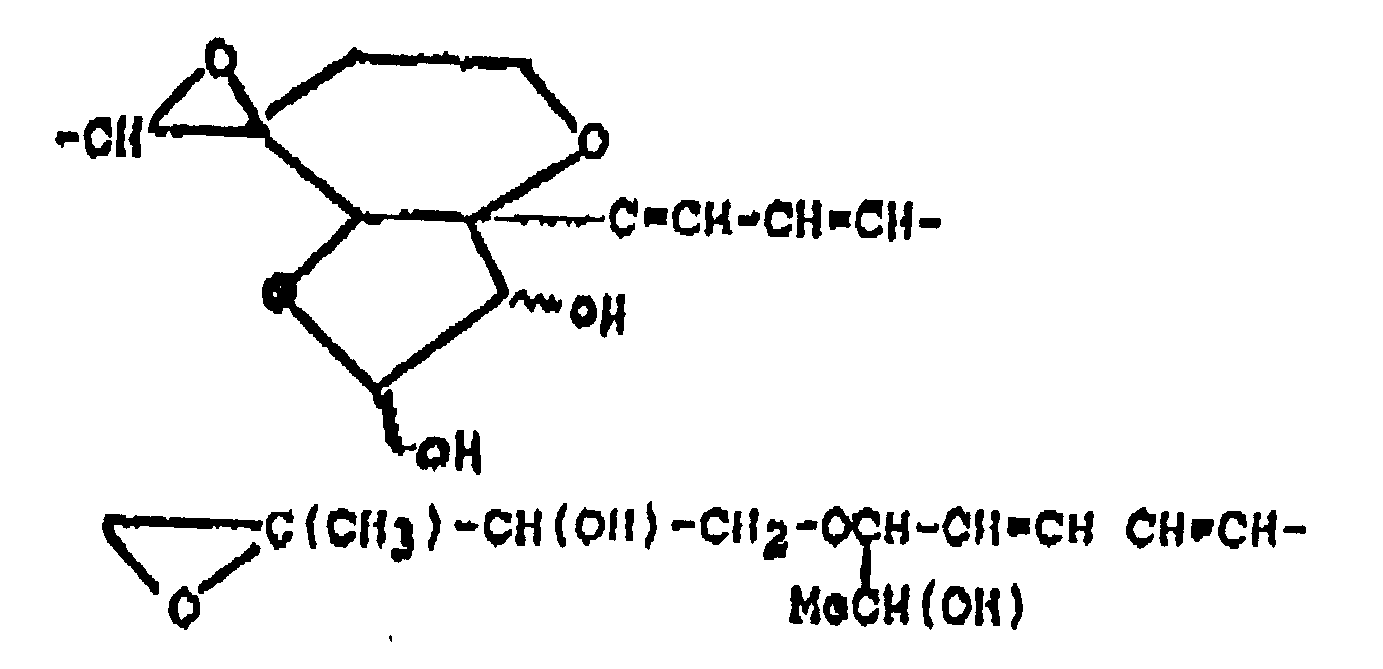
dans laquelle :
R₁ représente H, un groupe OH ou
R₂ représente H, un groupe OH,
ou OCOCH₂CH(CH₃)₂ ;
et R' représente un groupe :
23. Procédé suivant l'une quelconque des revendications 1 à 22, dans lequel le conjugué
est destiné à être utilisé dans le traitement de tumeurs.
24. Procédé suivant l'une quelconque des revendications 1 à 22, dans lequel le conjugué
est destiné à être utilisé comme agent cytotoxique dirigé vers une cible consistant
en la population définie de cellules.
25. Procédé de préparation d'une composition, qui comprend la préparation d'une composition
comprenant un conjugué suivant l'une quelconque des revendications 1 à 22.
26. Procédé suivant la revendication 25, dans lequel la composition est destinée à la
production d'un médicament permettant de tuer la population définie de cellules.
